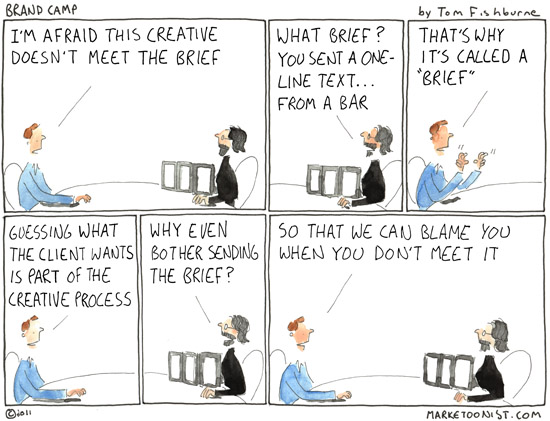How to Make Portfolio Website Project
Example of how to write brief with essential free and paid tools and basic questions
Overview of Portfolio Websites
Portfolio Website Templates
Using a pre-made template is a popular option for those who want a professional-looking website without the cost and time commitment of building it from scratch. There are many portfolio website templates available online, both free and paid, that can be customized to fit your specific needs. Here are some popular options:

Wix: Wix offers a variety of portfolio website templates with drag-and-drop functionality, making it easy to customize. They offer a range of features, including galleries, social media integration, and SEO tools.
Google rank: 4.5

WordPress: WordPress offers a wide range of portfolio website templates, both free and paid, that can be customized with the use of themes and plugins. They offer a high level of flexibility and control, making them a popular choice for those with more advanced skills.
Google rank: 4.5
While using a pre-made template can save time and money, it can also limit the level of customization and control you have over your website. Additionally, many templates are used by a large number of people, which can make your website look less unique.
Building a Portfolio Website from Scratch
Building a portfolio website from scratch offers a higher level of customization and control over your website. It allows you to create a website that is unique to your brand and showcases your specific skills and accomplishments. However, building a website from scratch requires more time and expertise, and can be more costly.
Here are some steps to consider when building a portfolio website from scratch:
- Choose a Domain Name and Hosting: Before building your website, you need to choose a domain name and hosting provider. Choose a domain name that is easy to remember and reflects your brand, and choose a hosting provider that offers reliable uptime and fast loading speeds.
- Plan Your Website: Plan out the structure and design of your website before starting the build. This includes deciding on the pages, layout, and features you want to include.
- Code Your Website: Code your website using HTML, CSS, and JavaScript. This requires a high level of expertise, and you may need to hire a developer to assist you.
- Add Content: Once your website is built, add content, including text, images, and videos. This is the time to showcase your work and accomplishments.
- Test and Launch: Test your website to ensure it is working properly, including checking for broken links and responsive design. Once you are satisfied with your website, launch it to the public.
In conclusion, the choice between using a pre-made template or building a portfolio website from scratch depends on your goals, budget, and level of expertise. Using a pre-made template can save time and money, but limits customization and control, while building a website from scratch offers a higher level of customization and control but requires more time and expertise. Whatever option you choose, remember to showcase your work and accomplishments in the best possible way to attract potential clients and employers.
Portfolio Website Development Brief
This template provides a structured format for outlining the key aspects of a portfolio website development project, including its goals, target audience, design preferences, technical requirements, and additional features.
| Section | Description |
|---|---|
| Project Name | [Your project name] |
| Project Description | [Brief description of the project goals and main functionality of the portfolio website] |
| Target Audience | [Description of the target audience, including demographics, interests, and preferences] |
| Design Preferences | [Description of the desired design style, including color scheme, layout, typography, etc.] |
| Technical Requirements |
|
| Pages and Sections |
|
| Additional Features |
|
| Testing and Deployment |
|
Define the Project Objectives and Goals
When it comes to programming an entertainment website, there are a few key objectives and goals that you should keep in mind to ensure that your website is successful. Here are some tips and tricks to help you achieve these goals, as well as some essential types of work that you should focus on:
- User experience (UX) is essential: One of the main goals of programming an entertainment website is to provide a great user experience. This means ensuring that your website is easy to use, visually appealing, and responsive. Focus on creating an intuitive navigation system, clear calls-to-action, and high-quality content that will engage and entertain your users.
- Mobile optimization is a must: With more and more people accessing websites on their mobile devices, it's essential to ensure that your entertainment website is optimized for mobile. This means using responsive design techniques to ensure that your website looks great on any device, and focusing on mobile-specific features, such as touch-based navigation.
- Content management is key: An entertainment website needs to be regularly updated with fresh, high-quality content to keep users coming back. This means having a robust content management system (CMS) in place that allows you to easily add and update content. Consider using a CMS like WordPress or Drupal that is specifically designed for content-heavy websites. How to write CMS brief How to write website content brief
- Performance optimization is crucial: A slow-loading website can lead to high bounce rates and frustrated users. To ensure that your entertainment website is fast and responsive, focus on performance optimization techniques such as image compression, minification of code, and caching.
- Security is paramount: An entertainment website may be a target for hackers and other cybercriminals, so it's essential to prioritize security. This means implementing SSL encryption, using strong passwords, and keeping your website up-to-date with the latest security patches and updates.
By focusing on these objectives and goals, as well as the essential types of work outlined above, you can create a successful and engaging entertainment website that will attract and retain users. Remember to prioritize user experience, mobile optimization, content management, performance optimization, and security to create a website that will stand the test of time.
List of popular programs for setting goals and objectives:
Monday.com is a cloud-based platform that allows users to create their own applications and work management software. The product was launched in 2014 and in July 2019, the company raised $150 million, based on a $1.9 billion valuation. The company went public in June 2021 and is based in Tel Aviv, Israel.
Google rank: 4.4
Trello is a web-based, Kanban-style, list-making application and is developed by Trello Enterprise, a subsidiary of Atlassian. Created in 2011 by Fog Creek Software, it was spun out to form the basis of a separate company in New York City in 2014 and sold to Atlassian in January 2017.
Google rank: 6.4

Asana is a web and mobile work management platform designed to help teams organize, track, and manage their work. It is produced by the San Francisco based company of the same name. The company was founded in 2008 by Dustin Moskovitz and Justin Rosenstein. The product launched commercially in April 2012.
Google rank: 9.4
Target Audience for Portfolio Website
When creating a portfolio website, it's important to consider your target audience. Your website should be designed with your audience in mind, so that it effectively showcases your work and appeals to their needs and preferences. Here are some potential target audiences for a portfolio website:
- Potential Clients: If you're a freelancer or running your own business, your target audience may be potential clients. Your website should showcase your skills, experience, and the type of work you can do for clients. It should be designed to appeal to the types of clients you want to work with.
- Employers: If you're looking for a job, your target audience may be potential employers. Your website should showcase your skills, experience, and the types of projects you've worked on. It should be designed to appeal to the types of companies you want to work for.
- Industry Peers: Your target audience may also include other professionals in your industry. Your website should showcase your skills and expertise, and position you as an authority in your field. It should also be designed to appeal to other professionals in your industry, who may be interested in collaborating or networking with you.
- Potential Collaborators: Your target audience may also include potential collaborators, such as other freelancers or businesses. Your website should showcase your skills and the types of projects you're interested in working on. It should also be designed to appeal to potential collaborators who may be interested in partnering with you on projects.
By considering your target audience and designing your portfolio website with their needs and preferences in mind, you can create a website that effectively showcases your work and helps you achieve your desired outcomes, whether it's attracting new clients, securing a job, or networking with other professionals.
7 Tools to Help You Learn About Your Target Audience
Knowing your brand’s target demographics can help you create better audience profiles and reach them on the platforms and in the places they frequent most. There are a lot of ways to dig into the demographics of your current visitors and your target audience, and you may already have tools installed to start mining for information. Here are seven tools you can use to learn more about who your current visitors and customers are, as well as the audience you want to attract.
Read more8 Tools to Better Understand Your Target Audience

We read a lot in the SEO world about things like keyword research , analyzing your competitors, and other things to get traffic to your site. But I don’t see information very often about deciding who your target audience is and how to make sure your keyword choices will actually reach them. This is one way to take your keyword research to the next level, and it’s well worth the effort. So rather than trying to guess whether your SEO or PPC ads are appearing in front of the right people, here are some tools you can use to make sure.
Read morePortfolio Website Design
Design is a crucial aspect of creating a portfolio website. A well-designed website will effectively showcase your work and help you achieve your desired outcomes, whether it's attracting new clients, securing a job, or networking with industry peers. Here are some key considerations for designing your portfolio website:
- Visual Hierarchy: Establish a clear visual hierarchy on your website, with the most important information and content appearing prominently. This could include your name or business name, a headline or tagline, and your most impressive work samples.
- Color Scheme: Choose a color scheme that reflects your personal brand and appeals to your target audience. Stick to a consistent color palette throughout the website to create a cohesive look and feel.
- Typography: Choose typography that is easy to read and complements your overall design. Use typography to establish a hierarchy of information and highlight important content.
- Layout: Use a layout that is clean, uncluttered, and easy to navigate. Use white space strategically to create a sense of balance and emphasize important content.
- Imagery: Use high-quality images or videos to showcase your work. Use images that are relevant to your industry or style, and ensure they are properly optimized for web viewing.
- User Experience: Consider the user experience when designing your website. Ensure that it is easy to navigate, with clear calls to action and intuitive menus. Make it easy for visitors to contact you or view more information about your work.
Conclusion
Whether you opt for pre-made portfolio website templates or choose to build your website from scratch, the decision hinges on your goals, budget, and expertise level. Utilizing templates can save time and money but may limit customization, while building from scratch offers high customization but demands more time and expertise. Whichever path you take, the key is to showcase your work and achievements effectively to attract potential clients and employers.



